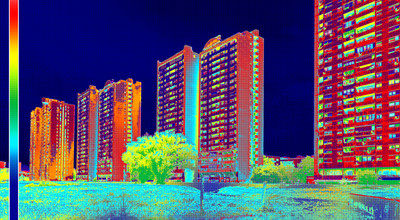EPBD 2012 is now implemented in all members states. Although the directive does not specify the indoor parameters, it requests that buildings must be healthy. EPBD revision 2018 specifies in several articles that the requirements of indoor climate must be met and refers to national or regional specifications. The numeric values for the indoor environmental parameters are now more important than ever. Deterioration of indoor environment is banned due to energy savings. Studies have shown that the IEQ is often better in low energy buildings as they are generally more carefully designed than average buildings.
The certification of IEQ is our most important tool for building owners to protect their building investment. Bad IEQ can reduce the value of a building significantly, or even lead to the demolishing of the building. Building professionals must be able to guarantee an acceptable level of IEQ. The communication with investors should be simple and reliable, not through hundreds of parameters which are impossible to understand for a general public.
An attempt to develop an understandable indicator was included in the EPBD IAQ standard EN 16798-1 for IEQ and ventilation. Proposed procedure is still a little complicated and does not include all relevant parameters. A recent proposal for an iEQ indicator, TAIL, was developed in EU project ALDREN. TAIL includes Thermal environment, Acoustic environment, Indoor air quality and Lighting. Four dimensions of the IEQ are combined into a single indicator which can be used in communication between building professionals, building owners and investors.
The criteria, evaluation and monitoring of indoor environment are extremely important in all stages of the building process, in design, construction, commissioning, operation and renovation. It is important to also understand the effects of technical solutions on the indoor environment and human reposes.
One of the most important factors in the environmental control is thermal environment. Proper indoor temperature is not only for comfort but may have cause a serious health effects if not properly controlled. Good temperature control has, on the other hand positive effect of productivity, learning, sleeping etc. Especially now when building structures are used in increasing amount as thermal storage the fluctuating indoor temperature should not exceed the established limits of temperature swings.
Even more important and complex is the IAQ (indoor air quality). It cannot be defined yet with a single indicator. In the TAIL index several parameters are included in evaluation of indoor air quality like concentration of CO2, formaldehyde, and radon, also some indirect parameters are included like ventilation rate and visible mold. Ventilation has a significant influence on energy use of a building, it may contribute up to 30-40% of the delivered energy use. A simple energy saving measure is the reduction of air flow rates for ventilation which will affect rapidly on the energy use but can be very dangerous for the health of building occupants and building structures. It is important to realize that, for example, tightening the building envelope with new airtight windows can reduce ventilation too much, and must be compensated by the specific ventilation system which supplies proper ventilation to all rooms. Heat recovery from the exhaust air will significantly improve the energy efficiency of ventilation. Indoor air quality and energy efficiency are improved simultaneously.
It should be also noted that minimum values of indoor environmental parameters are not necessarily optimum values. For example, the absolute minimum value of ventilation given is EN 16798-1 is 4 L/s,person, but the scientific literature tells that it should be 6-7 L/s, person or higher if also other factors like productivity and learning are taken into the account. It also should be noted that ventilation is not the only factor for good IAQ, as important is the control of sources like emissions from building materials.
The range of the IEQ parameters is wide in the national guidelines which makes it difficult for an international investor to evaluate the buildings. The HelthVent project demonstrated a huge variation in design values for ventilation in national guidelines. Ratio of highest to lowest to was 3 to 1 for schools and day care centres and even higher 4 to 1 for offices. There is an obvious need to establish the common European criteria for IEQ including indirect criteria like ventilation rates. The need for information on indoor environment was also top listed in the REHVA questionnaire on the topics of future Guidebooks.
Author: Olli Seppänen
Professor emeritus
REHVA Fellow


